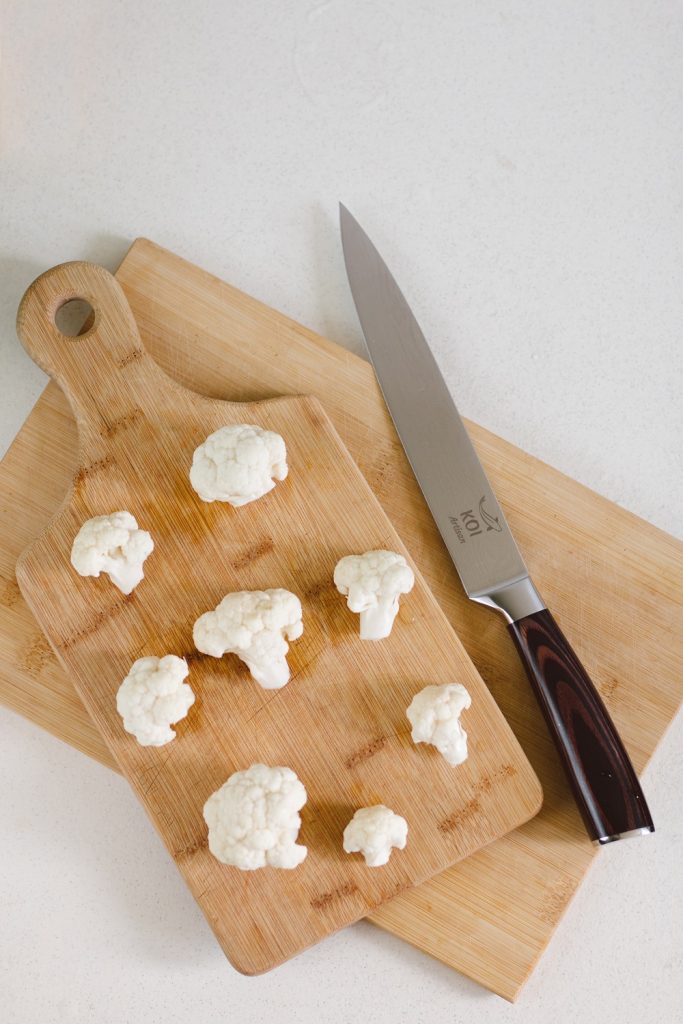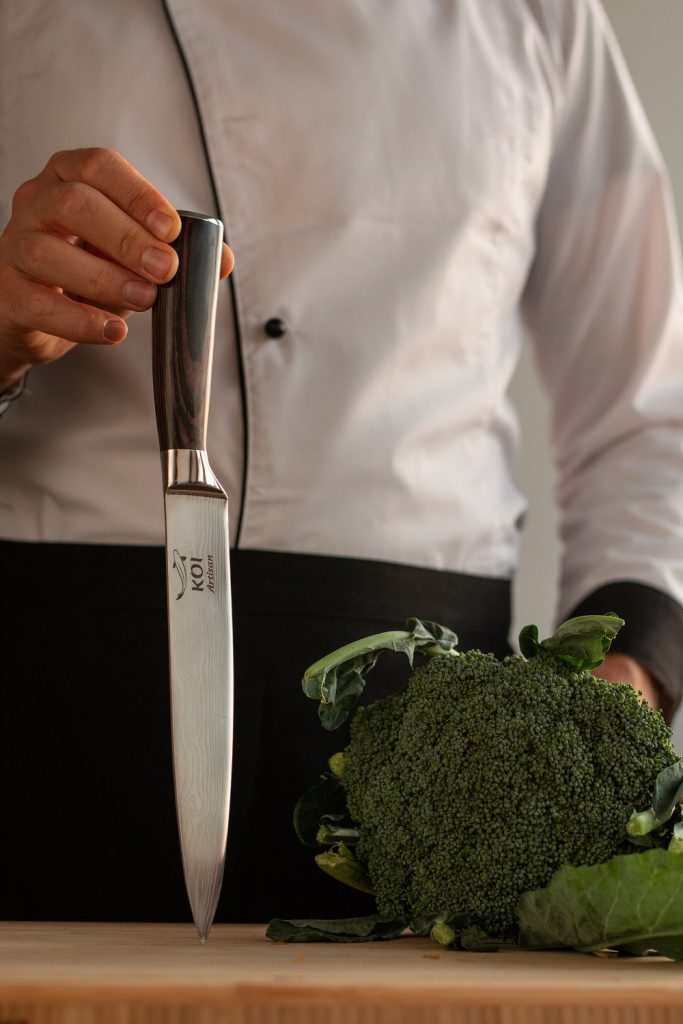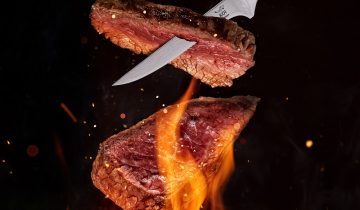A carving knife with a blade length of 8 to 15 inches that is used to carve huge roasts, fowl, and fillet large fish. A carving knife’s blade edge is either smooth or bevelled. The blade should be large enough to carve through a cut of meat, poultry, or fish in one motion. Larger portions of meat require specialty knives, such as the Roast Beef Slicer, which has a blade length of 12 to 16 inches and is designed for slicing thick cuts of prime rib. A carving knife can have a hard blade for slicing roasted meats, a more flexible blade for poultry, or a very flexible blade for slicing smoked pork and fish, depending on the flexibility of the blade.

Electric knives that can be used for both carving and slicing can be made with two blades to accomplish multiple cutting jobs. The electric knife has two razor-sharp, narrow blades that travel back and forth in a back-and-forth motion to slice or carve through a variety of meats. Electric knives are adaptable in cutting soft vegetables like tomatoes as well as a variety of meats from fish to beef, and are often the ideal choice when there are a variety of textures to be sliced.
Carving knives and carving forks are frequently marketed together in sets. The carving fork’s purpose is to keep the meat steady while it’s being sliced, keeping the other hand safe from the knife blade. Carving forks usually have two long, sharpened curved prongs that can be readily inserted into large portions of meat while keeping them stable while being sliced.
What Does a Carving Knife Look Like?
Carving knives have sharp ends and narrow, thin blades. The narrow blades, which are narrower than a chef’s knife, are designed to eliminate resistance when moving back and forth. The blade is significantly thinner than a chef’s knife, which is rather thick at the spine (the section of the blade opposite the cutting edge). When compared to an extremely sharp chef’s knife, which many people use as a substitute, the wider blade and bigger surface area in contact with the meat or poultry causes drag, slowing slicing and limiting the ability to produce uniform, thin slices.
A carving knife’s blade should be long enough to cover huge roasts, hams, or turkeys without having to saw the knife back and forth. They are available in a variety of sizes ranging from 8 to 14 inches. The knife should be longer than the largest thing you plan on slicing, which is an important quality of a carver. So, in most cases, the longest KOI Artisan carving knife is optimal, and the less “sawing” you do with the longer blade, the better, since this will result in less damage and ripping of the flesh. Purchase the longest one available.

As you carve, the sharp pointed tip can help you reach inside and around joints and work around bones.
Large shallow dimples can be found along the sides of modern cutting blades. There are many names for knives with indentations that exist in market. The indentations minimise resistance even further, allowing for easier and thinner slices.
Serrated Edge Slicing Knives:
Slicing blades with serrated edges, as opposed to KOI Artisan, produce more confusion. Bread knives are slicing knives with a serrated edge. Because of the fragile nature of meat and poultry, a serrated edge is usually not a good option. Instead of aiding in the cutting process, the pointed serrations may rip and shred the meat. Serrated-edge slicers, on the other hand, can be used for more than only bread. A serrated slicer, on the other hand, is useful for cutting through stubborn things like pineapples. A carving knife will not be used nearly as frequently as other common kitchen knives, such as the chef’s knife. You might not need one if you don’t prepare many roasts, whole birds, or hams. You don’t need to spend as much time thinking about it as you would with a chef’s knife. This covers the basics of a KOI Artisan carving knife, however another comparable instrument, the fish filleting knife, may require more explanation.
Difference Between Carving Knife and Fish Filleting Knife
A fish filleting knife is a broad term that refers to a variety of knives. Filleting knives come in a variety of shapes and sizes, and it’s simple to mix them up with carving knives. Indeed, any highly sharp tool, including a chef’s knife, can be used to fillet a fish. Knives designed expressly for filleting fish, on the other hand, have very thin, flexible blades that make it easier to guide the knife down the fish’s spine and then carve the fillets or slice them into very thin slices.
Fish fillet knives have incredibly narrow and curved blades with a sharp tapering point, such as the blade of this KOI Artisan 6-inch tiny fillet knife (at least usually). Because the soft skin of fish makes avoiding friction even more crucial, the blade will normally be smaller than a carving knife. Some blades are more flexible than others, but if the blade is too thin and flexible, sharpening becomes difficult. A pointed tip on a fish filleting knife is necessary for guiding the knife into the fish to begin your cuts and for any precision work.

As previously said, naming standards are ambiguous, and there are no restrictions as to how a carving or filleting knife should be made. As a result, you may come across knives that don’t seem to meet the description, such as sushi chefs’ knives that are ideal for filleting and slicing sashimi. A carving knife is one of the least-used tools in the kitchen for most home cooks, but it’s useful to have around Thanksgiving and Christmas, especially if you cook a lot of bone-in roasts.



 No products in the cart.
No products in the cart.